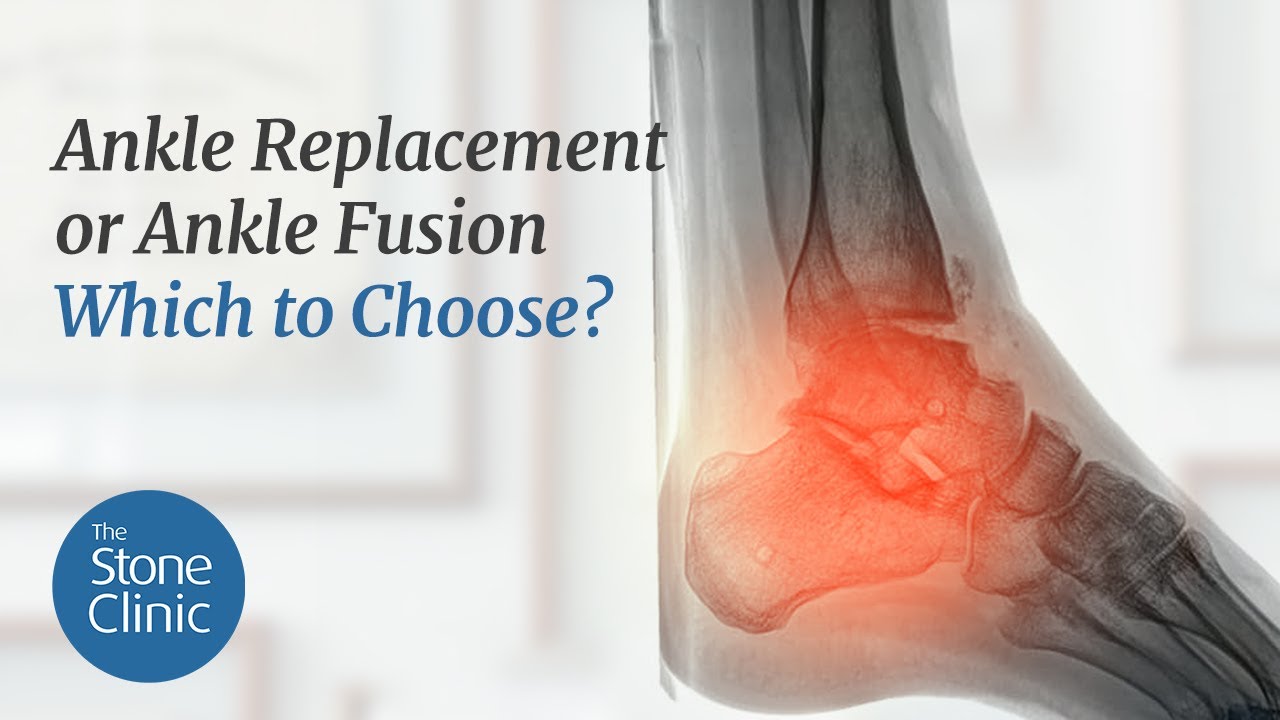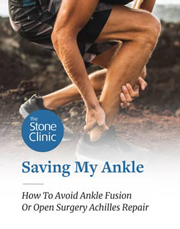The Arthritic Ankle
Hear From Our Patients
High Performance Skater Bounces Back from Ankle Cartilage InjuryAnkle cartilage is unique. Unlike the knee or hip, the ankle rarely becomes arthritic without an injury. Its unusual biology permits unlikely repairs to take place as well. Here is an overview of the mechanics and a look at what is new.

Stone Clinic patient Hannah D, in physical therapy after avoiding ankle fusion with a BioAnkle repair. Watch her full story here
What Makes Ankle Cartilage Resistant to Arthritis?
The ankle joint is composed of the distal tibia (shin bone), the fibula (small bone on the outside), and the talus. These bones are covered in articular cartilage, the unique material that covers the ends of all bones in joints. The ankle cartilage differs from the knee joint cartilage in multiple ways, as described below. These differences account for the ability of the ankle cartilage to last a lifetime.
Cartilage is a dense material with few cells and a “charged” extracellular matrix that appears glass-like; therefore, the name “hyaline” (translucent) cartilage. The charge comes from sugar molecules that have negative and positive charges, which causes them to attract and expel water when weight is applied. This hydrodynamic absorption and release is what permits cartilage, if not injured, to survive a lifetime. The cartilage in the ankle is denser and has a more highly-charged, sugar-rich matrix than the knee joint. The ankle cartilage has a lower water content, higher stiffness, and lower permeability than the joints that more commonly become arthritic.
How Injury Leads to Arthritis in the Ankle
Normally, people take two to three million steps per year. Each step delivers about five times the person’s weight, depending on the height of the step. Even though the entire body weight is loaded onto this relatively small joint, arthritis rarely develops in the ankle (unless an injury, such as a fracture, occurs). If the fracture is not reduced perfectly, or if an ankle sprain is not healed perfectly, the range of motion in the ankle can be compromised. Abnormal motion or uneven joint surfaces leads to a dramatic increase in wear patterns and arthritis sets in. For this reason, we usually recommend early surgery for ankle fractures or instability—unless perfect reductions and stability can be obtained with braces and exercises.
Ankle Arthritis Treatment Options: From Injections to Surgery
When arthritis does occur, the range of treatment options has recently been expanded. Mild damage can now be treated with symptom-modifying therapies such as injections of growth factors combined with lubrication. Today, this is most often a cocktail of hyaluronic acid plus PRP (platelet-rich plasma). Surgical repair of localized lesions using the articular cartilage paste graft technique has, in our hands, been successful—especially when combined with ligament repair.
Patients with more severe arthritis have classically been told to consider an ankle fusion or an artificial ankle replacement. Both, unfortunately, have a mixed success rate. Fusion is superb at pain relief, but usually causes arthritis to develop in the surrounding joints. Ankle replacement is great at restoring some motion and for pain relief, but has a not-insignificant complication rate and limited return to sports.
A bold effort to re-create a joint space with an aggressive clearing of the arthritic bone and cartilage, combined with an articular cartilage paste graft, has worked well in our clinic to restore severely arthritic, bone-on-bone joints. Though the numbers are still relatively small, motion is improved and pain is reduced. None of these patients has yet gone on to an ankle fusion or replacement. The procedure appears to work, in part, due to the unique biology of the ankle joint. The capacity for cartilage healing, and reformation of the joint space, has long been noted in patients undergoing joint distraction procedures, but had not been combined with the novel cartilage stimulation science. The harnessing of cartilage replacement techniques, now augmented by anabolic and lubrication injections, makes the future look a bit brighter for those people with severe ankle arthritis.
Ankle Replacement or Ankle Fusion. Which to Choose?
Our answer is: Neither! Patients told they need an ankle fusion or replacement, have more options. Advances in biologic therapies—including biologic ankle repair or injections of growth factors and joint lubrication—offer promising alternatives to people with severe ankle arthritis. Our BioAnkle program surgically treats arthritic ankles without hardware or implants, expanding the possibilities beyond invasive, end-stage procedures like fusion or replacement.



